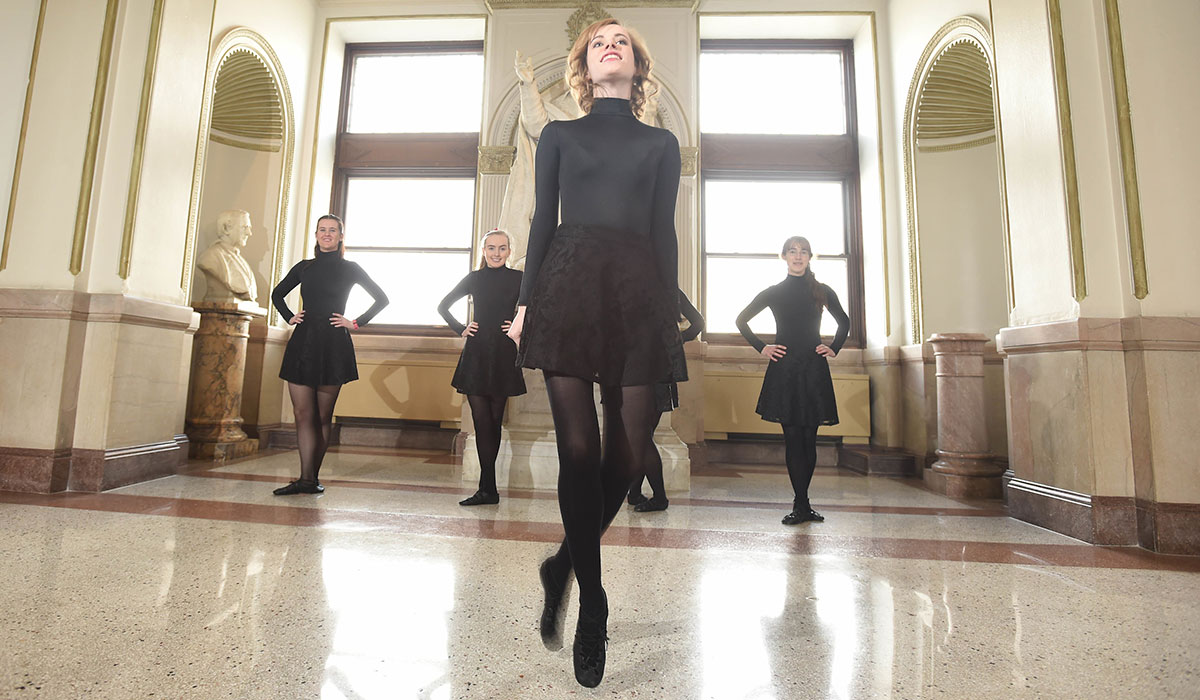
From its founding in 1887, the Catholic University of America has cultivated a unique relationship with Ireland, its people and its legacy in the modern world. The faculty in Arts and Sciences has long encouraged the study of Irish society, from the country’s languages, art, and literature to its rich religious, social, and political complexity. Irish culture has shaped, and continues to shape, the present in profound ways, not only in Ireland but on the European continent, in North America, and throughout the world.
The story of Irish Studies at Catholic University begins with one of the school’s first professors – later, its fourth rector – Bishop Thomas Shahan (1857–1932). As a young man, Thomas Shahan was devoted to Ireland and concerned with matters of Irish interest in American society. Born to a New Hampshire family of Irish descent, he was deeply invested in the political, spiritual, and intellectual fortunes of his ancestral country. During the 1890s, Shahan become a staunch advocate for cultural and political independence in Ireland. And as the Celtic Revival began to take shape, he became a sometime ambassador for the movement, promoting its most prominent artists, writers, and critics among American audiences in the United States.
Of particular concern to Shahan was the fate of Irish Gaelic, Ireland’s native language. Due to increasing Anglicization, this most “venerable, ancient tongue,” he called it, was now threatened with extinction. And yet, Shahan insisted that Irish could still flourish and become prominent in the modern world, if only it were supported by university education and cultivated by writers and critics.
With this in mind, Shahan exhorted his contemporaries to preserve, protect, and propagate Irish. At an 1894 meeting of the Ancient Order of the Hibernians, in a speech entitled “Let Us Save the Irish Language,” Shahan argued that “Gaelic thought, and imagination, and style, and faith, and ardor” deserved their “proper place among the moulding influences” of the coming century. To achieve this, 'a revival of the Irish Language' was necessary.
“We have not the slightest idea”, he maintained, "of making the Irish a spoken tongue in this country, but…we desire to propagate the respect of that ancient idiom; to translate and study its rich and varied literature…Above all, we desire to enrich the English language in the coming centuries as it has been enriched in the past…in a word, to contribute many deathless elements out of the ancient Gaelic world to that English tongue which in God's providence is soon destined to be sovereign over more millions than the Greek and the Latin ever ruled in their palmiest days."
Two years following this speech, the Ancient Order of the Hibernians (AOH) responded to Shahan’s call, providing Catholic University with a generous endowment for a new chair in Gaelic Languages and Literature. At that time, to make an endowment exclusively for the cultivation of Gaelic language was rare. Among American universities, only Harvard then possessed a similar arrangement. Aided by the generosity of the AOH, Shahan’s support of Irish strengthened the reputation of Catholic University, providing it with some clout in Irish political and literary circles in the school’s earliest years. The University attracted significant speakers on matters of Irish concern, perhaps none more notable than Ireland's greatest modern poet, W. B. Yeats (1865–1939).
Yeats first visited Washington, D.C., over the winter of 1903 and 1904. He was introduced to President Theodore Roosevelt by Maurice Francis Egan, a professor of English at Catholic University and close friend to the president. Egan also brought Yeats to the campus of Catholic University, where he lectured to “a large and appreciative audience” on the evening of February 21, 1904. His topic was “The Intellectual Revival in Ireland.” Throughout his talk, Yeats insisted on the importance of the Irish language, arguing that independence would come “not by force of arms nor radical politics, but [through] the gradual weaning of Irishmen from English customs and the English tongue.” His lecture was well received, and as Yeats left Washington that February, he left impressed with what he had seen of Catholic University. Before boarding the RMS Oceanic to return to Europe just two weeks later, he wrote Thomas Shahan, praising the school in these words. “You have surely a great university and I wish we had its like in Ireland.”
The faculty at Catholic University remain committed to developing the passion for Irish Studies first articulated in the early years of the University’s history. We are dedicated to spreading greater knowledge, understanding, and appreciation of the achievements which Ireland has brought to the world, both ancient and modern. To that end, our courses immerse students in all things Irish, bringing them into the history, art, language, and literature of Irish society.
